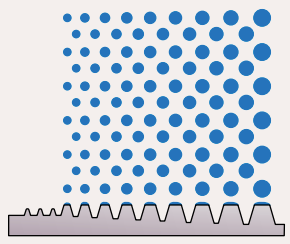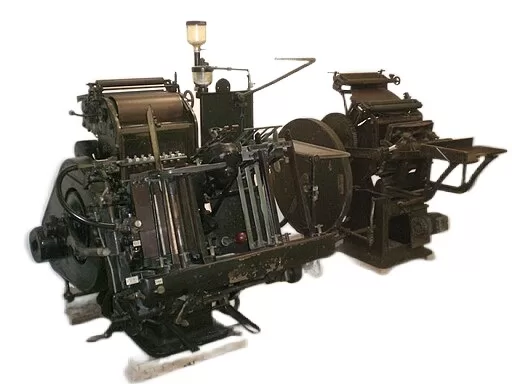Because flexographic printing is a niche segment of the printing industry, locating technical support when a printing defect occurs can be difficult. Should you contact the press manufacturer, an image carrier service, or a former press operator? Depending on the nature of your problem, cutting-edge image carrier services can assist in diagnosing defects in your prints and determining whether the image carrier is to blame.
Maximizing Your Printing Efficiency: The Benefits of Image Carrier Technical Support Services
Printing defects can take many different forms and be caused by a variety of different issues, ranging from dot gain to mottled prints. The challenge for press operators is determining where and why the defect is occurring.
Working with image carrier providers who have a track record of success is critical for the longevity and success of your print runs. While image carrier services typically include the production of sleeves, cylinders, and plates, top-tier manufacturers also provide press operators with assistance when defects and challenges arise.
Reviving Your Imaging Equipment: Unlocking the Secrets to Effective Maintenance and Repair of Image Carriers
To achieve the best results, it is crucial to ensure that image carriers are well-maintained and regularly serviced. This includes thorough:
- Cleaning
- Inspection for damage or wear
- Replacement of worn or damaged parts
Image Carrier Technical Support Services can provide the necessary knowledge and tools to ensure that these steps are carried out effectively and efficiently. These services may include:
- Scheduled maintenance programs
- Diagnostic testing to identify any issues
- Replacement of worn or damaged parts with high-quality components.
Optimisation of Image Carriers for Specific Applications
The critical role of Image Carrier Technical Support Services lies in their ability to optimise image carriers for specific applications. To achieve this, technical support experts can provide advice on selecting the appropriate image carrier materials, including polymers or metals, and then optimise the image carrier for specific printing or imaging processes.
By doing so, they can ensure that the image carrier is tailored to the unique requirements of the imaging system, ultimately leading to improved image quality and consistency. This involves the following:
- Selecting the right image carrier material: The selection of the appropriate material is crucial to achieving the desired image quality.
- Optimising the imaging process: This may involve adjusting various settings, such as exposure time or imaging resolution, to achieve optimal results.
- Optimising for specific printing or imaging processes: This ensures that the image carrier is tailored to the specific requirements of the imaging system.
Overall, by optimising image carriers for specific applications, they can help improve the quality and consistency of images produced by imaging equipment, leading to increased efficiency, reduced downtime, and cost savings.
Cracking the Code: Expert Tips for Diagnosing Printing Defects
Identifying the location of a printing defect is one of the most difficult aspects of a press operator’s job. While recognising the type of defect may be as simple as looking at your prints, determining where and why the defect is occurring can be difficult. Most cutting-edge image carrier services have a team of experts ready to assist a press operator in determining which of the following 12 most common flexo printing defects are plaguing their prints:
- Dot gain
- Gear marks
- Halo
- Feathering
- Doughnuts
- Skip out
- Misregistration
- Mottled image
- Filling in
- Bridging
- Pinholing
- Dirty print
However, determining the nature of the defect is only half the battle. The expertise of the image carrier service will be useful in determining the root cause of the flexo printing defect. Printing defects can occur for a variety of reasons, but in our experience, the majority are caused by one of the following ten common causes:
- Pressure
- Press mechanics
- Anilox
- Cell volume
- Ink transfer
- Ink viscosity
- Ink pH level
- Contamination
- Plate swelling
- Drying speed
To help press operators quickly identify their defects and any potential causes, a team of experts created this Flexo Printing Defects Diagnostic Chart & Troubleshooting guide to help them limit press downtime while troubleshooting defects. Once the defect has been identified and the cause determined, image carrier services can assist a press operator if their cylinder, plates, or sleeves are damaged, bent, or otherwise deformed, or if the image carrier has a misregistration or feathering issue.
Expert Advice on Image Carriers: Consult With a Knowledgeable Team
Professional Image Carrier Technical Support Services can provide the perfect solution for optimising your imaging equipment. They can help you get the most out of your investment and ensure that you are getting the highest quality images possible thanks to their expertise and experience. Professional Image Carrier Technical Support Services has the knowledge and experience to help you get the most out of your imaging equipment, whether you need help with installation, troubleshooting, maintenance, or repair.
Image credits: iStock


![[Flexo Flaw Fixing] High Dot Gain 020_Dot_Gain_Illustration](https://flexopedia.net/wp-content/uploads/2022/03/020_Dot_Gain_Illustration.png)


